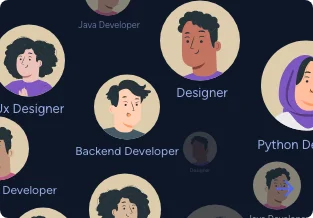What is the purpose of migrations in Laravel, and how
do they work?
Migrations in Laravel are used to manage
database schema changes over time. They allow developers to define and modify
database tables and their columns, indexes, and relationships using PHP code.
Laravel's migration system provides a simple way to version and apply database
changes, ensuring consistency across different environments and enabling
collaboration among developers.
Explain the concept of middleware in Laravel.
Middleware in Laravel acts as a filter for HTTP
requests entering your application. It provides a way to modify or handle requests
before they reach the application's routes. Middleware can perform tasks such as
authentication, authorization, request logging, and input validation. Laravel allows
developers to define custom middleware or use pre-defined middleware provided by the
framework.
How does Laravel handle caching, and what caching
mechanisms are available?
Laravel offers a powerful caching system to
improve application performance. It supports various caching mechanisms like file
caching, database caching, and in-memory caching using popular cache stores such as
Redis or Memcached. Laravel's caching system helps reduce the load on the database
and speeds up frequently accessed data or computed results.
What is the purpose of the Eloquent ORM in Laravel?
Eloquent is Laravel's object-relational mapping
(ORM) system that simplifies database interactions. It allows developers to work
with database records as objects, providing an expressive syntax for querying,
creating, updating, and deleting records. Eloquent supports relationships between
database tables, making it easy to define and work with associations like
one-to-one, one-to-many, or many-to-many.
How does Laravel handle authentication and
authorization?
Laravel provides a built-in authentication
system that simplifies user authentication and authorization. It includes features
like user registration, login, password reset, and email verification. Laravel's
authorization capabilities allow developers to define user roles and permissions,
and easily control access to routes or actions based on user privileges.
Suppose you encounter a performance issue in a Laravel
application. How would you identify and resolve the issue?
The candidate should mention techniques like
profiling the application using tools like Laravel Telescope or Xdebug, analyzing
database queries using the Laravel Debugbar or EXPLAIN statements, optimizing slow
queries or adding database indexes, caching frequently accessed data, utilizing
eager loading for optimizing relationships, and leveraging Laravel's query
optimization methods.
How would you handle error handling and logging in a
Laravel application?
The candidate should discuss practices like
using Laravel's exception handling mechanism to capture and handle exceptions,
logging errors using Laravel's logging system or third-party libraries like Monolog,
configuring log channels for different environments, handling and reporting
application errors, and utilizing tools like Bugsnag or Sentry for centralized error
tracking.
Describe your approach to handling data validation and
form validation in a Laravel application.
The candidate should mention utilizing
Laravel's validation features, such as form request validation or manual validation
using Validator class methods, defining validation rules and messages, handling
validation errors in controllers or views, displaying validation errors to users,
and utilizing client-side validation techniques for a better user experience.
How would you handle database transactions in a
Laravel application?
The candidate should discuss using Laravel's
database transactions to ensure the atomicity and consistency of database
operations. They should mention techniques like using the beginTransaction(),
commit(), and rollback() methods, nesting transactions, handling transaction
failures and exceptions, and utilizing database transactions with Eloquent models or
raw SQL queries.
Suppose you need to integrate a third-party API into a
Laravel application. How would you approach the integration process?
The candidate should mention steps like
understanding the API documentation and endpoints, using Laravel's HTTP client or
Guzzle library for making API requests, handling authentication or token-based
access, parsing API responses, handling error scenarios and retries, implementing
data mapping and transformation, and writing tests to ensure integration
correctness.
Can you describe a challenging Laravel project you
worked on? What were the complexities involved, and how did you overcome them?
The candidate should provide an example of a
complex Laravel project they were involved in, describe the specific challenges
faced (e.g., scalability, integration with legacy systems, performance
optimization), and explain the actions they took to overcome those challenges. This
question evaluates problem-solving skills, adaptability, and technical expertise.
Tell us about a time when you collaborated with a team
of developers to deliver a Laravel project. How did you contribute to the team's
success?
The candidate should share an experience where
they worked collaboratively with a team, participated in code reviews, communicated
effectively, resolved conflicts, and contributed to the successful delivery of a
Laravel project. They should highlight their teamwork, communication skills, and
ability to work towards common project goals.
How do you ensure code quality and maintainability in
your Laravel projects?
The candidate should discuss their approach to
writing clean and modular code, following Laravel's coding conventions and best
practices, utilizing code quality tools like PHPStan or PHPUnit, writing unit tests
and performing code reviews, documenting the codebase, and refactoring when
necessary to improve maintainability.
Describe a situation where you had to troubleshoot and
resolve a critical production issue in a Laravel application. How did you handle the
situation, and what was the outcome?
The candidate should describe a scenario where
they encountered a critical production issue in a Laravel application, explain how
they diagnosed the issue, utilized debugging tools or logs, identified the root
cause, implemented a fix, and verified the solution. They should highlight their
problem-solving skills, attention to detail, and ability to handle high-pressure
situations.
How do you stay updated with the latest developments
and best practices in the Laravel community?
The candidate should discuss their approach to
continuous learning, such as following Laravel-related blogs or newsletters,
participating in Laravel communities or forums, attending Laravel conferences or
meetups, experimenting with personal projects, exploring official documentation and
release notes, and contributing to open-source Laravel projects.









